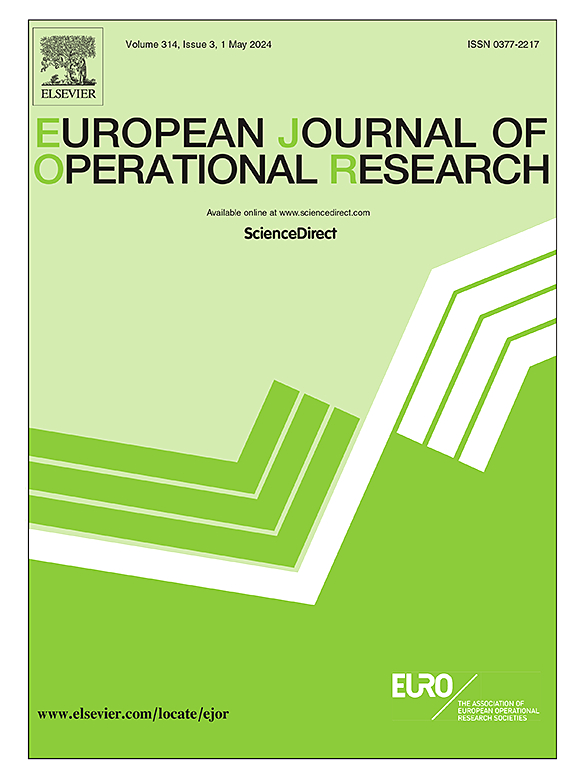The first mile is the hardest: A deep learning-assisted matheuristic for container assignment in first-mile logistics
IF 6
2区 管理学
Q1 OPERATIONS RESEARCH & MANAGEMENT SCIENCE
引用次数: 0
Abstract
Urban logistics has been recognized as one of the most complex and expensive part of e-commerce supply chains. An increasing share of this complexity comes from the first mile, where shipments are initially picked up to be fed into the transportation network. First-mile pickup volumes have become fragmented due to the enormous growth of e-commerce marketplaces, which allow even small-size vendors access to the global market. These local vendors usually cannot palletize their own shipments but instead rely on containers provided by a logistics provider. From the logistics provider’s perspective, this situation poses the following novel problem: from a given pool of containers, how many containers of what size should each vendor receive when? It is neither desirable to supply too little container capacity because undersupply leads to shipments being loose-loaded, i.e., loaded individually without consolidation in a container; nor should the assigned containers be too large because oversupply wastes precious space. We demonstrate NP-hardness of the problem and develop a matheuristic, which uses a mathematical solver to assemble partial container assignments into complete solutions. The partial assignments are generated with the help of a deep neural network (DNN), trained on realistic data from a European e-commerce logistics provider. The deep learning-assisted matheuristic allows serving the same number of vendors with about 6% fewer routes than the rule of thumb used in practice due to better vehicle utilization. We also investigate the trade-off between loose-loaded shipments and space utilization and the effect on the routes of the collection vehicles.求助全文
约1分钟内获得全文
求助全文
来源期刊

European Journal of Operational Research
管理科学-运筹学与管理科学
CiteScore
11.90
自引率
9.40%
发文量
786
审稿时长
8.2 months
期刊介绍:
The European Journal of Operational Research (EJOR) publishes high quality, original papers that contribute to the methodology of operational research (OR) and to the practice of decision making.
 求助内容:
求助内容: 应助结果提醒方式:
应助结果提醒方式:


